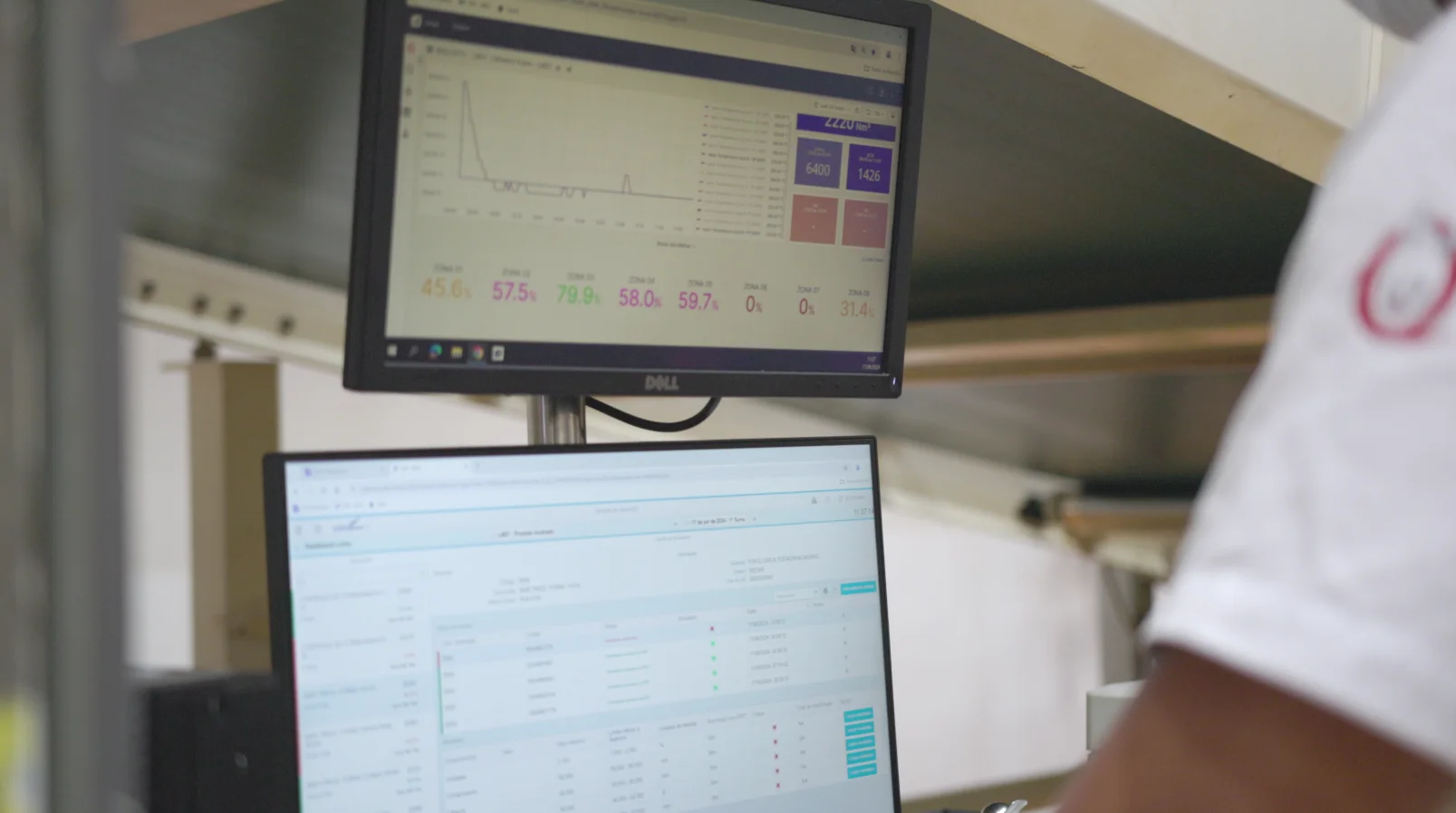O método de descobrir e explorar dados é uma forma eficiente de encontrar resultados inteligentes para os mais diferentes setores da indústria. O misturador Banbury, um equipamento industrial, é projetado para realizar a mistura intensiva de compostos com alto desempenho e precisão. Com sensores e sistemas de monitoramento, é possível coletar dados como torque, temperatura e tempo de mistura, permitindo ajustes em tempo real para otimizar o processo e garantir consistência.
Seu funcionamento se baseia em uma câmara de mistura fechada, onde dois rotores giram em sentidos opostos, promovendo cisalhamento intenso do material. Esse movimento, aliado ao controle de temperatura e pressão, favorece a fusão e dispersão eficiente dos componentes. O calor gerado pela fricção amolece materiais como a borracha, facilitando a incorporação dos aditivos.
Projetado para lidar com grandes volumes, o Banbury se destaca pela repetibilidade do processo, que, com o apoio da análise de dados, se torna ainda mais confiável e eficiente.
Ao analisar informações sobre o Misturador Banbury, a ciência de dados é uma grande aliada para otimizar ainda mais seu processo, a partir de diversos tipos de análise:
- Análise reológica: avalia como os materiais fluem no misturador Banbury, permitindo identificar o impacto das condições do processo na viscosidade e elasticidade;
- Análise de cisalhamento: o monitoramento de variáveis como temperatura e pressão auxiliam na dispersão de materiais como polímeros em direções opostas;
- Análise das principais variáveis do processo: avalia fatores como temperatura, pressão e tempo de mistura para compreender seu impacto nas propriedades mecânicas do composto elastomérico;
- Análise de eficiências energética: avalia como o consumo de energia impacta a qualidade do produto e a eficiência do misturador Banbury, sendo crucial tanto na produção quanto no processamento.

Dessa forma, a análise que for aplicada ao misturador Banbury é válida para diversos tipos de indústria, como:
- O misturador Banbury, na indústria química, mistura matérias-primas, gerando calor por atrito, com processos geralmente exotérmicos, embora algumas misturas absorvam calor e resfriem.
- Na indústria de polímeros, o misturador Banbury garante a distribuição uniforme do calor necessário para a vulcanização, processo que aumenta a durabilidade do material por meio de ligações cruzadas entre cadeias de polímeros.
- Na indústria de cosméticos, o misturador Banbury mistura ingredientes, pigmentos e aditivos, enquanto a análise da eficiência energética otimiza a qualidade e a gestão de energia.
Desenvolvimento de outros materiais com Banbury
Pesquisas acadêmicas e industriais têm explorado o uso do Misturador Banbury para criar compósitos, nanocompósitos e blendas com propriedades aprimoradas. Isso inclui a incorporação de aditivos em termoplásticos e elastômeros para projetos científicos e tecnológicos, solicitados pelas indústrias e pesquisas acadêmicas.
Outro estudo nessa área, é da Universidade Federal do Rio Grande do Sul (UFRGS), produzido em 2010. A dissertação destaca variáveis fundamentais no processo de mistura em misturadores internos como o Banbury, especialmente no contexto de compostos elastoméricos.
As variáveis, como o grau de enchimento, a temperatura de descarga e os tempos de introdução de ingredientes, influenciam diretamente a dispersão e a homogeneidade dos materiais, afetando suas propriedades mecânicas e reológicas. Compreender esses parâmetros é essencial para otimizar a qualidade dos compostos e atender aos padrões industriais.
Além disso, um minicurso online, produzido em 2015 por pesquisadores da Universidade Federal de Campina Grande, está disponível no ResearchGate. O material disponível aborda o processamento de polímeros no Misturador Interno de Laboratório, incluindo aplicações acadêmicas e industriais.

Além das aplicações mencionadas, o misturador Banbury também está presente na indústria de transformação de PVC para indústria moveleira, especialmente na etapa de formulação de compostos flexíveis. Durante essa fase, todos os ingredientes da formulação — como resinas de PVC, plastificantes, estabilizantes térmicos, cargas e pigmentos — são homogeneizados por meio de misturadores intensivos.
O controle das variáveis operacionais desse tipo de misturador é essencial para garantir a qualidade do composto final. Entre as variáveis mais relevantes estão: temperatura de mistura, tempo de processamento, velocidade dos rotores, torque aplicado, pressão do êmbolo (ram) e a sequência de alimentação dos componentes.
Esses parâmetros influenciam diretamente as propriedades físicas e químicas do composto, como viscosidade, grau de dispersão e estabilidade térmica. A seguir, apresenta-se uma tabela com as principais variáveis associadas ao processo de mistura no Banbury:
|
Variável |
Descrição | Importância |
| Temperatura de mistura | Temperatura interna da câmara durante o processo | Evita degradação térmica e melhora a qualidade da mistura |
| Tempo de mistura | Duração total do ciclo de mistura | Controla a homogeneidade; tempo excessivo pode danificar materiais |
| Velocidade dos rotores (RPM) | Rotação dos rotores durante a mistura | Influencia a força de cisalhamento e a dispersão dos ingredientes |
| Torque | Resistência dos rotores à movimentação durante o processo | Indica a viscosidade e a consistência da mistura |
| Pressão do ram (êmbolo) | Pressão exercida sobre os materiais dentro da câmara | Garante contato eficaz com os rotores e melhor mistura |
| Sequência de alimentação | Ordem e tempo de adição dos ingredientes | Afeta a reação química e a dispersão uniforme |
Em suma, a análise da eficiência enérgica em misturadores Banbury traz diversas otimizações com tecnologia avançada, digitalização da linha de produção e coleta de dados assertiva. Além disso, causam um impacto significativo ao influenciar as propriedades mecânicas e reológicas do composto, o que afeta diretamente na qualidade do produto.
Saiba mais sobre a ST-One